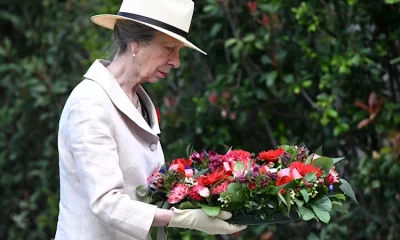Science
World’s 1st necklace? Prehistoric painted shells, once on twine, found in Israel – The Times of Israel
Experiments on 160,000-year-old clam shell fossils in northern caves indicate they are earliest examples of shell beads strung for display on the human body, Israeli scientists say

Sometime around 160,000 to 120,000 years ago, early man began to string together painted shells and display them, according to a new international, interdisciplinary study published in the open-sourced PLOS One journal this week.
The authors, a team of scientists led by Tel Aviv University’s Daniella E. Bar-Yosef Mayer and University of Haifa’s Iris Groman-Yaroslavski, performed “use-wear” experiments on bittersweet clam (Glycymeris) shell collections excavated in two northern Israel caves. They discovered that the naturally occurring holes in the bi-valve shells showed proof of having been strung on flax twine, apparently to form early humans’ first necklaces.
Until now, the earliest potential example of string use was in the form of fibers found on an eagle talon recently found in Krapina, Croatia, dating to 130,000 years ago.
Get The Times of Israel’s Daily Edition by email and never miss our top stories
Free Sign Up
Early humans migrated out of Africa — potentially during a Levantine Ice Age — circa 200,000 years ago. With their arrival to the Israeli caves, also came their shell collections. In the new study, the authors suggest that the clam shells — which were abundantly found on the beaches not far from the Carmel Mountain caves — were chosen precisely because of their easily strung holes.
“Our data suggest that sometime within the time range of 160 and 120 ka BP the technology for making strings emerged, and that this technology boosted the collection of naturally perforated shells for display, a practice common to this day,” write the authors in the article, “On holes and strings: Earliest displays of human adornment in the Middle Palaeolithic.”
The authors describe a progression in shell choice: The shells found in the Misliya Cave, which date to 240,000160,000 years ago, are intact and presumably not used for decorative purposes. In the Qafzeh Cave collection, circa 120,000 years ago, the vast majority of shells were perforated.
Which came first? The hole or the string?
In addition to describing a series of creative experiments to recreate the wear on the shells while being strung on twine, the authors include in their article potential psychological insights into the choice of these adornments.
The authors hypothesize that “modern humans collected naturally perforated Glycymeris shells also for symbolic use…

-

 Noosa News9 hours ago
Noosa News9 hours agoPrincess Anne visits Gallipoli Barracks in Brisbane on Remembrance Day as Australian tour ends
-

 General18 hours ago
General18 hours agoHungarian British author David Szalay wins Booker Prize 2025 for his novel Flesh
-

 Noosa News8 hours ago
Noosa News8 hours agoRoyal visit to Gallipoli Barracks in Enoggera on Remembrance Day
-

 General10 hours ago
General10 hours ago‘Do you care?’: Coles stares down anti-salmon activists
